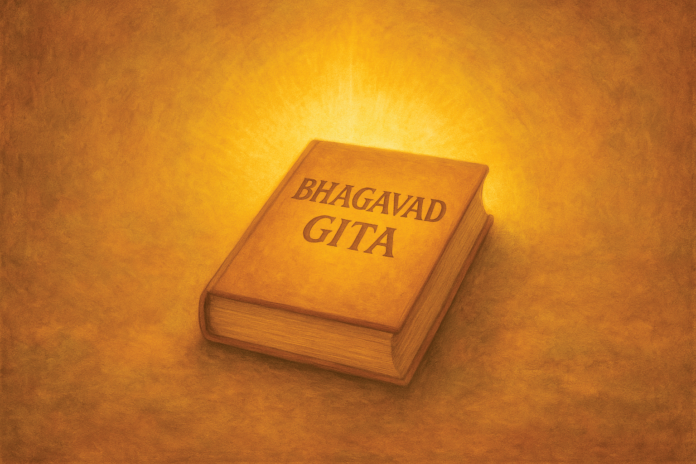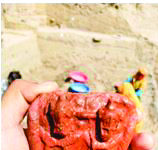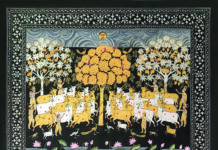The Gita challenges caste by promoting inner qualities over birth, urging liberation from all social identities
We live in a time when the line between spiritual wisdom and social distortion blurs daily. In a land that proclaims unity in diversity, caste remains the quiet contradiction. Alongside the lofty ideals of inner transformation and philosophical inquiry, social divisions continue to fester. One of the most misunderstood and often misused scriptures cited to justify this division is the Bhagavad Gita. Among its many teachings, a particular verse, Chapter 4, Verse 13, is frequently cited to justify caste. Some have even gone so far as to say that Krishna himself is responsible for centuries of caste-based oppression. Let’s ask an uncomfortable question: Does the Gita, India’s most revered scripture, support caste? This question has echoed for generations, raised in protest, confusion, and opportunistic misrepresentation. But the answer, when approached with clarity and sincerity, is both liberating and transformative.
Was the Gita Meant to Uphold Caste?
The answer is clear and direct: absolutely not. In fact, the Gita was spoken to liberate man from all forms of inner bondage, including caste identity. In Chapter 1, Arjuna is overwhelmed by despair. He fears that if war wipes out the warrior class, society will collapse into moral decay. He imagines a scenario where dharma is lost, women are left unprotected, and the resulting confusion gives rise to the mixing of social orders and the breakdown of family lineages. But let’s be clear: these are Arjuna’s fears, not Krishna’s wisdom. Arjuna is voicing the prejudices of his time, reflecting his inner confusion. Krishna responds to this misunderstanding in the verses that follow. The Gita was not spoken to support Arjuna’s view, but to correct it.
Even when Krishna says, I created the fourfold varna system based on guna and karma, in Chapter 4, Verse 13, he is pointing to an order based on inner qualities (guna) and actions (karma), not on lineage or ancestry. It is a call to live with understanding, not a label inherited at birth. Krishna even adds to this verse, Though I created this order, know me as the nondoer. What does that mean? It means Krishna, as the non-doer, is not entangled in the consequences of human misinterpretation. The responsibility for the right understanding rests with the seeker. And yet, society converted this dynamic model into a rigid hierarchy: one’s caste became fixed at birth, unalterable by choice or effort. This rigidification is not scriptural; it stands in contrast to the scripture’s intent.
The Gita Dismantles, Not Defends, Caste
One of the Gita’s most profound declarations is found in Chapter 5, Verse 18: “The wise see with equal vision a Brahmin, a cow, a dog, and an outcaste.” Is this not the antithesis of casteism? The Gita merely does not suggest equality; it asserts it. Yet over generations, its metaphors have been twisted into convenient justifications for social hierarchies. The Gita must be interpreted holistically, not cherry-picked to serve biases. Its entire message is: you are not what you think you are, not your body, your caste, or your preferences. We tend to project our social structures onto Krishna’s words. Such misunderstandings are largely the result of ignorance, rooted in self-interest and cultural inertia. Some reject Sanatan Dharma itself as oppressive, unaware that the Gita is not a voice of suppression but of inner liberation. Thus, both the beneficiaries and the victims of caste end up misreading the same text for different reasons. To move beyond blind allegiance or reactive rejection, we must return to the Gita’s essence—starting with the crucial difference between caste and varna.
Rediscovering Varna, Discarding Caste
Varna is determined by consciousness (chetna). Unlike animals, whose instincts are fixed, humans can rise or fall in consciousness. If you live in clarity and are committed to knowledge and truth, then you are in the Brahmin state. If you act with courage and discipline, you’re in the Kshatriya state. If you’re governed by ambition and acquisition, you’re in the Vaishya state. And if you’re pulled by pleasure, laziness, and resistance to learning, that is the Shudra state. Varna is simply a mirror of your current consciousness. Caste, by contrast, fixes identity to birth, regardless of the state of your consciousness. This confusion had already begun in Krishna’s time—hence the Gita. This is why it’s crucial not to confuse caste with varna. Varna still matters, not for the world to label you, but for you to honestly ask: What is driving me today? You need not declare your varna. Inwardly, know where you stand. That is your call to rise.
Blaming the Gita
for Society’s Ills To blame the Gita for casteism is like blaming hospitals for deaths just because many people die there. A hospital tries to heal; the Gita tries to awaken. If we fail to awaken, that is our failure, not the Gita’s. Take the recent castebased incident in Etawah, where social humiliation was inflicted in the name of purity. The real danger of such events lies not just in what happens externally, but in how they manage to revive caste identity in our minds. A person who once introduced himself simply now feels compelled to say, “I am of this caste.” That alone shows how the mischief has worked; it has succeeded in dragging your consciousness back into the mud of identification. They want you to stop seeing yourself as a human being and start seeing yourself as a caste. We should not let that happen. Such incidents are psychological terrorism—not bombs, but invisible explosions in the mind. They aim to spread fear, division, and reaction. And the most effective response is not outrage or counter-aggression, but utter refusal to react on their terms, a steadfast clarity that denies them psychological victory. Their failure lies in our refusal to see ourselves or each other through the lens of caste.
Where Did Caste Really Come From?
To answer that, we must first understand a crucial distinction within Indian scripture: Shruti and Smriti. Shruti texts, like the Vedas and Upanishads, are considered timeless and universal. Smriti texts, like the Manusmriti, are contextual and fallible. One might ask: if caste is so un-Vedantic, why has it been so deeply entrenched in Hindu society? The answer lies not in the scriptures, but in how society has selectively interpreted and institutionalized them. The misuse of spiritual texts to justify power structures is not unique to India—it is a global phenomenon. But the misuse does not invalidate the original message; it only reveals our failure to live up to it. Caste-based discrimination finds its strongest justifications in certain Smriti texts, not in the Gita or the Upanishads. Unfortunately, society blurred this line, treating even context-bound social codes as eternal mandates. In doing so, we substituted philosophy with folklore and inquiry with inheritance.
Certain Smriti texts gave rise to rigid caste justifications. Unlike Shruti, which conveys timeless truths, Smriti must be read with critical discrimination. A true religion cannot coexist with discrimination. What most people today call “religion” is, in fact, lok-dharma: folk practices, unexamined traditions, and inherited fears. Superstition, inequality, and violence often plague these practices. People often mistake these customs for spiritual truth, despite their significant divergence from it. True Dharma is the path of self-knowledge. Lokdharma is merely the social customs and roles people are born into and follow without inquiry. If we are to understand the Gita, we must understand the core of Vedantic thought. Without that lens, we read Krishna’s words based on our own conditioning. The result? His message becomes a reflection of our prejudice. The words are his; the meaning is ours.
The Eternal Message, Through Time
Throughout Indian history, this liberating message has resurfaced in waves. The first reform came with Vedanta, which declared: You are not your social role, you are the witness beyond all form. Later, the Bhakti movement, with saints like Kabir, Ravidas, and Nanak, sang this truth in local dialects, accessible to all. This wisdom has resurfaced across traditions and times. Consider this timeless couplet from Sant Kabir, sung during the Bhakti movement, which translates as: Do not ask a saint about his caste; ask him about his wisdom. Judge the sword by its sharpness, not by its sheath. This simple verse holds relevance even today. The Buddha, too, echoed this truth, though society ritualized his renunciation. Every few centuries, someone arises to restate this one, simple truth. And every time, society tries to distort and contain it. Today, once again, we are being called to rescue the essential from the ornamental.
A New Identity Beyond Caste
In our Gita sessions, we often recite a verse. Let this be our collective identity: Jaati hamaari aatma, Gotra hamaara Brahm. Satya hamaara baap hai, Mukti hamaara dharm. Meaning: Our caste is Atma. Our lineage is Brahm. Truth is our father, And liberation is our religion. This is the identity the Gita calls for—not in ritual, but in how we live. May we rise above inherited labels and walk the path of clarity, just as Krishna invited Arjuna. In a world still torn by names and notions, the Gita renews a timeless invitation: live by inner truth, not outer labels.
Acharya Prashant, a Vedanta exegete and philosopher, is the founder of the PrashantAdvait Foundation. He has authored several books and received honours including the Most Influential Vegan Award (PETA), the OCND Award (IIT Delhi Alumni Association), and the Most Impactful Environmentalist Award (Green Society of India).








